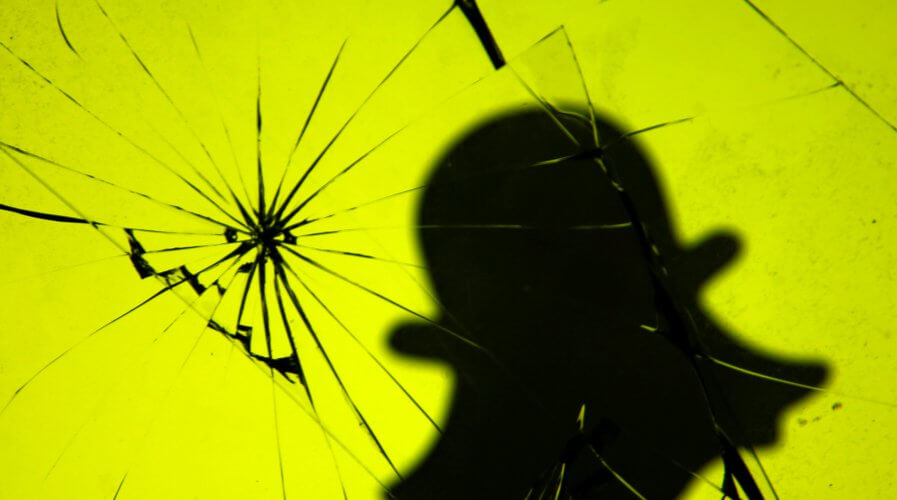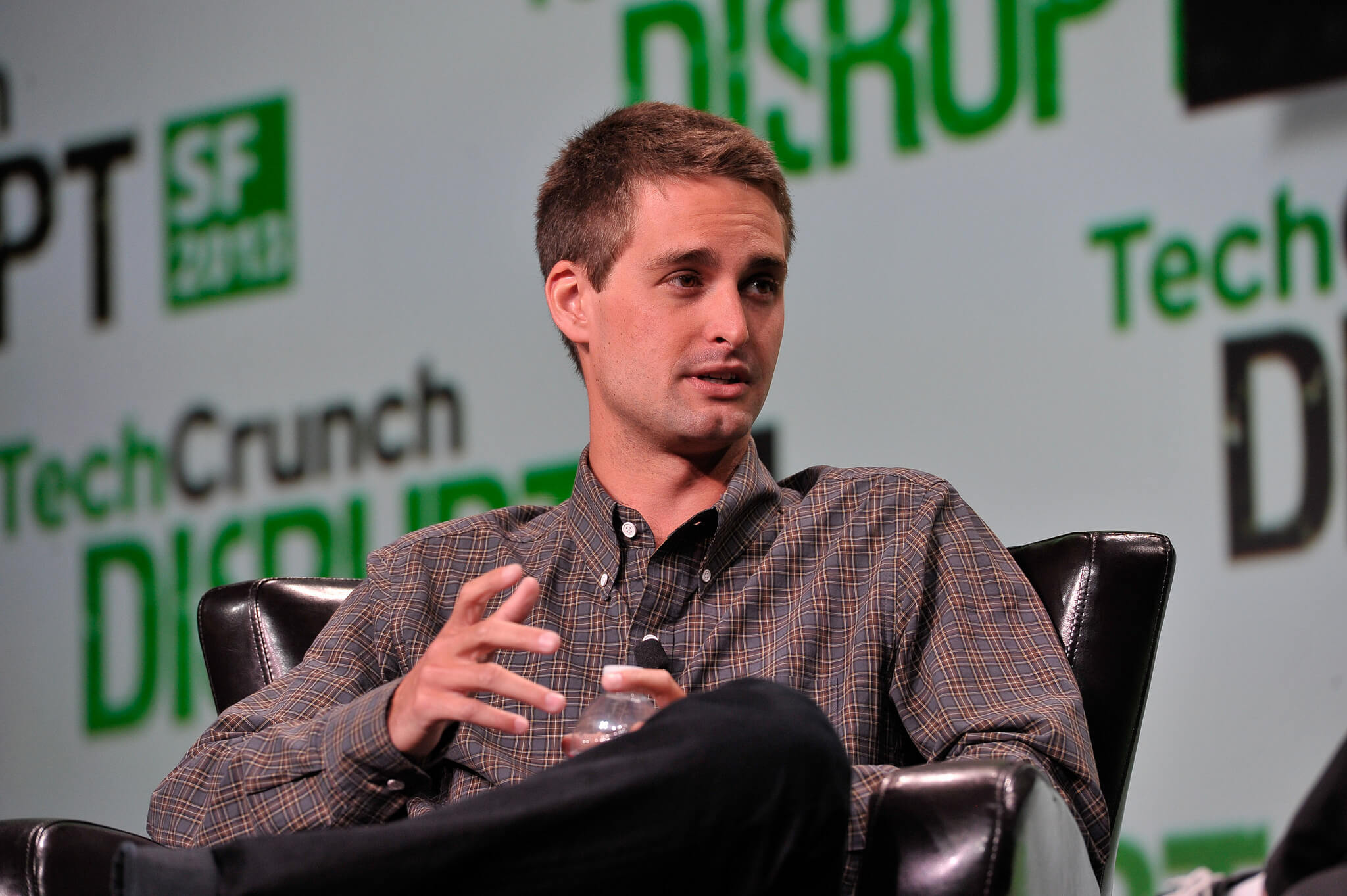
A 3D printed Snapchat logo is seen through broken glass in this illustration. Source: Reuters
A Snap decision to overhaul app raises eyebrows everywhere
OFF THE BACK of a poor earnings report, Snap Inc., the company behind the popular vanishing-message app that sparked a trend of copycats, said that it would be conducting an overhaul of its product as it looks to grow its audience base beyond the millennial.
Snap has repeatedly failed to achieve its promise of returns to investors since its IPO debuted in March, and since then what was once the hottest market debut for a tech stock in years has tumbled into the realm of uncertainty. Its stock price took a 20 percent hit after the market closed yesterday.
The company, founded by Evan Spiegel, reported that its user growth in the last three months has been significantly lower than in analyst estimates, despite daily active users rising from 173 million to 178 million from the second to third quarter of this year. Snap’s third-quarter revenue, the bulk of which comes from advertisements, rose to US$207.9 million from US$128.2 million. Analysts on average were expecting revenue of $236.9 million.
Their poor reported revenues and user growth in the third quarter of 2017 has prompted Snap to take a deep hard look at itself for a solution.
The result? Plan to redesign the platform into something resembling its archrival, Facebook, and its popular photo-sharing app Instagram.
The reason? Apparently, new users are finding the platform too difficult to understand and use.

Evan Spiegel, founder and CEO of SnapChat. Source: TechCrunch/Flickr
“We are going to make it easier to discover the vast quantity of content on our platform that goes undiscovered or unseen every day,” Spiegel told analysts on a conference call, according to reporting from Reuters. He added that there was a “strong likelihood” would be disruptive to short-term operations, but that it would be necessary for long-term gain.
Spiegel revealed that the plans for the redesign had included studies of other mobile content feeds including Twitter streams and Facebook’s News Feed. The current thinking includes potential ideas for a “personalized content service”, thus putting SnapChat more in line with its competitors, and could potentially cut into their differentiating factor.
For a long time, SnapChat’s popular vanishing-message model made it a trendsetter, rather than a follower. The company has long prided itself on its demographic of enriched millennials (remember Spiegel’s “SnapChat isn’t for poor people” comment?), a coveted asset that prompted Instagram, Facebook and WhatsApp to create copycat version.
By going the way of Facebook and Twitter’s eternal scroll content feature, SnapChat could be moving into a space where it has much less experience, and much less of an edge.
TO REPEAT IN ALL CAPS: SNAPCHAT IS CHANGING THE CHARACTER OF ITS SOLE MONEY MAKING PRODUCT, NINE MONTHS AFTER IT WENT PUBLIC.
— Shira Ovide (@ShiraOvide) November 7, 2017
New Snapchat sounds like…Facebook? pic.twitter.com/ruxiIinrNL
— Shira Ovide (@ShiraOvide) November 7, 2017
To recap: Evan Spiegel likes that Snapchat's audience isn't massive but is valuable young people. Also he's completely changing the app to get more people. This contradicts.
— Shira Ovide (@ShiraOvide) November 7, 2017
Spiegel also told investors that his platform would be looking at a model that would play into the public broadcasting format that Instagram and Facebook have perfected, rather than keeping it to the close-knit circle of friends that it traditionally worked off. It’s a significant change of tone from its previous strategy to act more like a chat group between friends, and is likely aimed at bringing on board more funding from brands and influencer-type commercial power.
Snap is not the only social media company looking to revive growth by changing its look. Microblogging service Twitter said on Tuesday it would roll out 280-character tweets to users across the world, double the length of its iconic 140-character tweets.
Snap is far behind Facebook and Google in making its ad system accessible to small businesses and should move faster, said Greg Portell, a consultant at A.T. Kearney.
“I think they spent a little too much time being different,” Portell said.
Snapchat, popular among millennials for the bunny faces and floral tiaras that can be added to pictures, allows users to chat through a series of disappearing photos and videos. Users can also post images and videos as “stories” – ephemeral posts that can be viewed in chronological order and disappear after 24 hours.
Additional reporting by Reuters
READ MORE
- Strategies for Democratizing GenAI
- The criticality of endpoint management in cybersecurity and operations
- Ethical AI: The renewed importance of safeguarding data and customer privacy in Generative AI applications
- How Japan balances AI-driven opportunities with cybersecurity needs
- Deploying SASE: Benchmarking your approach






